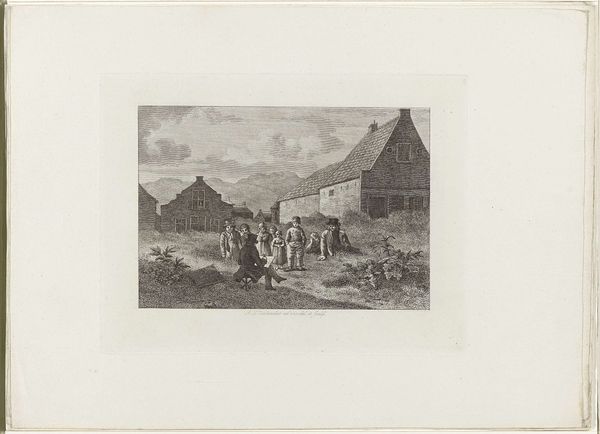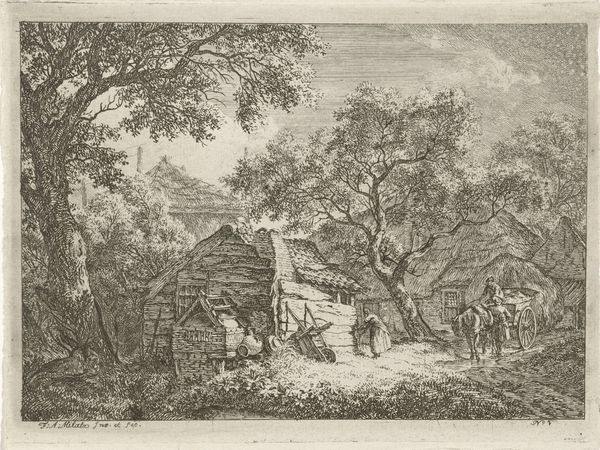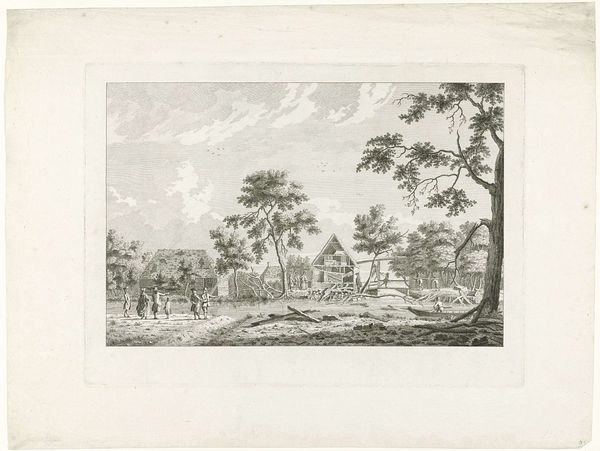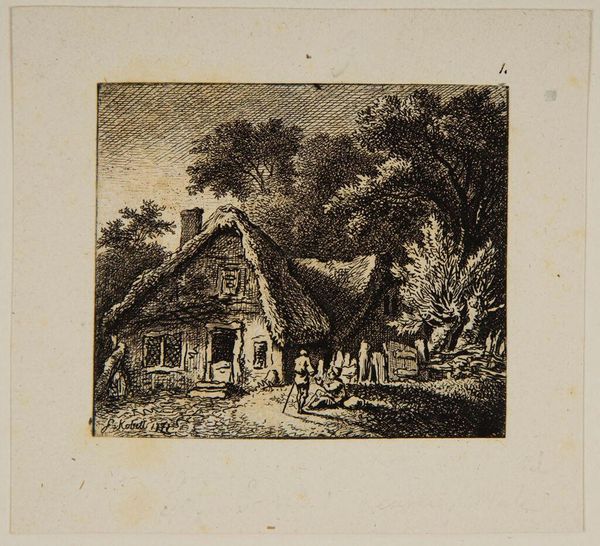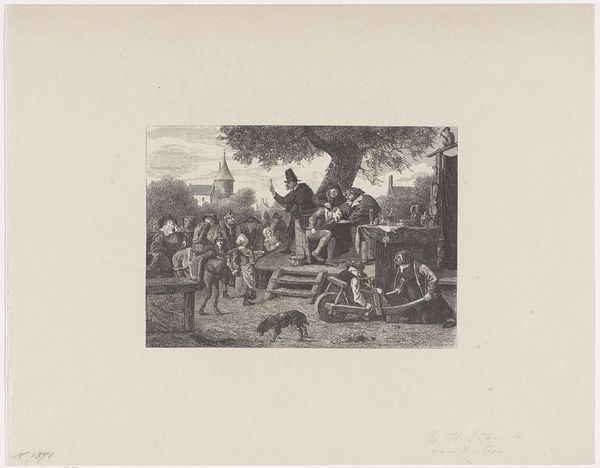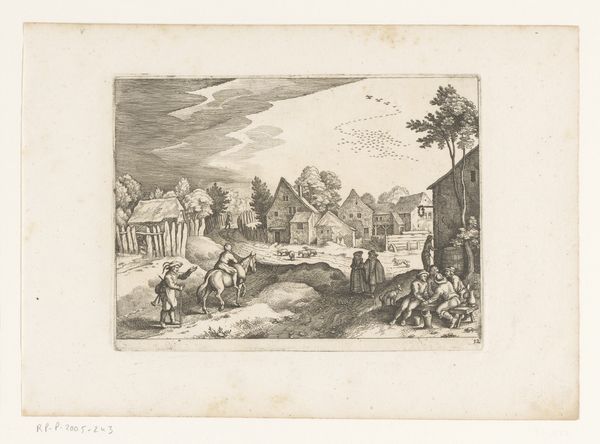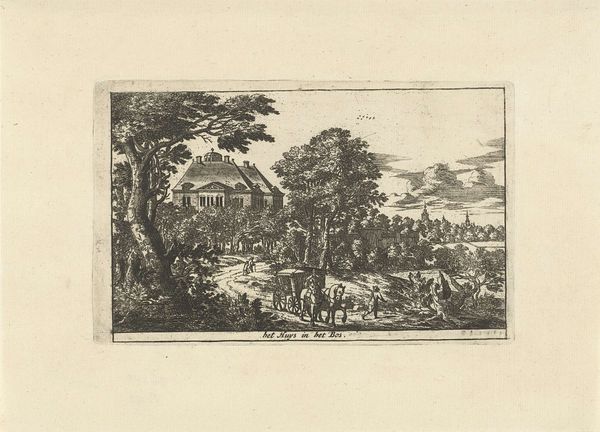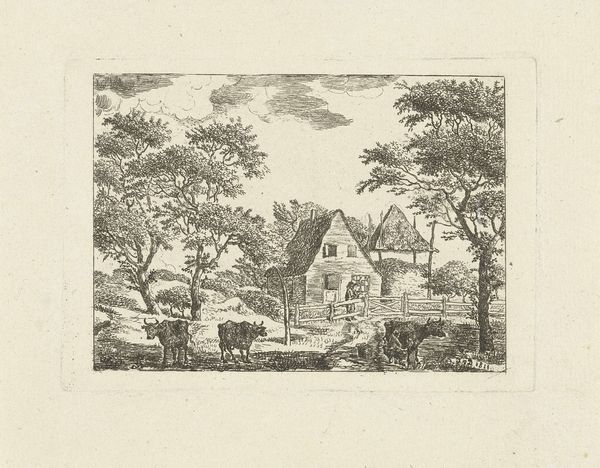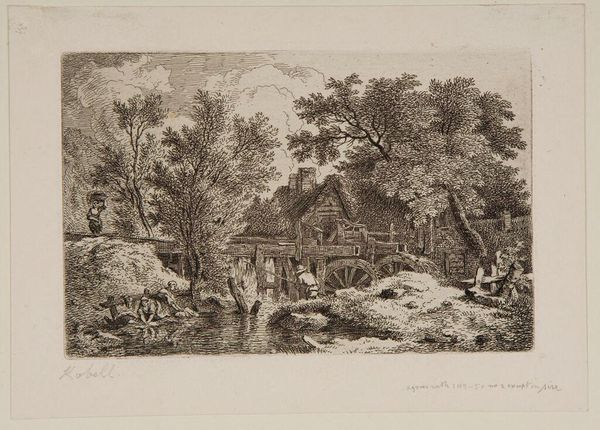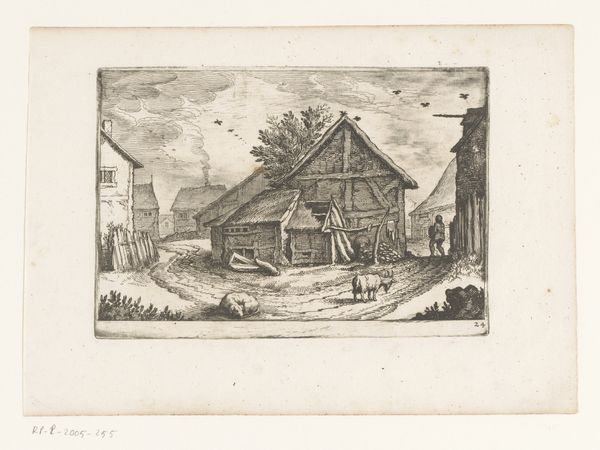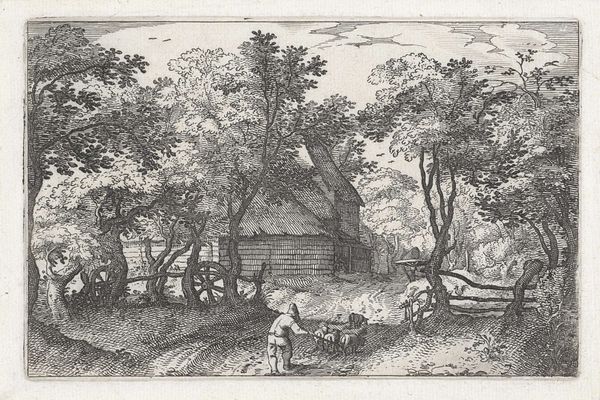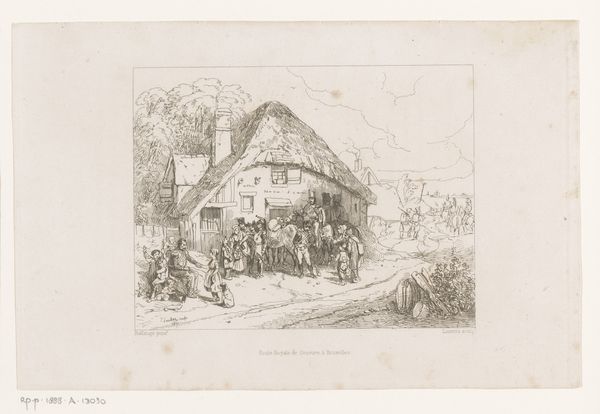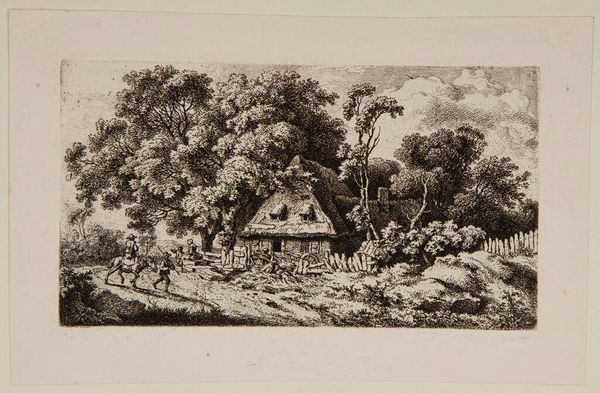
print, engraving
#
neoclacissism
# print
#
old engraving style
#
landscape
#
genre-painting
#
northern-renaissance
#
engraving
Dimensions: height 143 mm, width 185 mm
Copyright: Rijks Museum: Open Domain
Curator: Welcome. We’re looking at a print from between 1799 and 1856, titled “Houthakkend boerengezelschap voor boerderij,” which translates to “Wood-Chopping Peasant Company in Front of a Farmhouse.” It is by Abraham Lion Zeelander. Editor: My initial impression is of a scene that’s both ordinary and stark, rendered with incredible detail. The way the artist captures the textures—the wood, the thatched roof, the worn clothing—speaks to a close observation of rural life. There’s a certain… melancholy to it. Curator: The medium itself is an engraving, allowing for incredibly fine lines and a great range of tonal values, lending itself to this genre painting of everyday life in a rural setting. You really feel the labor in the depiction, right? It's quite striking. Editor: Absolutely. This image prompts me to consider the historical context of peasant labor. Look at the faces, the stooped postures – this isn't just about aesthetics; it’s a depiction of social realities, wouldn’t you say? The backbreaking work represented and the implicit lack of leisure time... It makes you consider class divides, resource disparity, gendered labor, the entire sociopolitical situation of the time. Curator: Precisely. We must also consider the social and material conditions required for this piece to have been produced at all. Zeelander himself required training, access to tools, and likely a patron or market. It isn't just about the 'idea' of peasant life. The engraving serves both aesthetic and, eventually, potentially commercial purposes. Editor: And for whom was it intended? To provide a glimpse into rural life for an urban audience? To reinforce societal norms or, perhaps subtly, to critique them? What sort of viewer identifies with and idealizes these figures—what power dynamic are we examining between that consumer and the individuals depicted in these conditions? It begs such questions of viewership. Curator: Right, the lines and tones would also reflect certain stylistic conventions— the influence of Northern Renaissance styles is apparent. Ultimately, the engraving offers insights into artistic conventions and labor, the materiality of its making, and the cultural values that it embodied and reinforced at the time. Editor: I agree. It's a small window into a much larger socio-economic structure— an entry point into considering power, labor, and representation during this period. The work speaks of identity, class, labor, and historical inequalities all at once. Curator: An engraving that resonates even now, centuries later, because it documents labor in the age of its production, making this artwork a perfect conversation-starter about historical working conditions. Editor: Yes. Hopefully, a discussion about what work *means* as both an artform, but a marker for all intersectional histories connected to art, society, and culture as a whole.
Comments
No comments
Be the first to comment and join the conversation on the ultimate creative platform.
